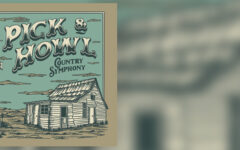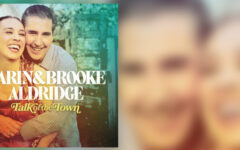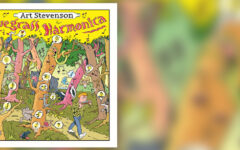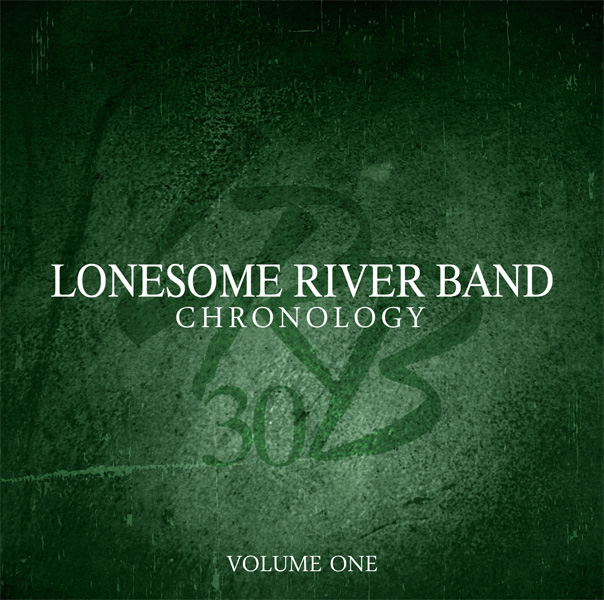
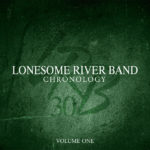 In their latest project, Chronology – Vol 1, the Lonesome River Band has undertaken a daunting task. The current edition of the band has chosen to mark LRB’s 30th anniversary by re-recording a sample of material from its past catalogue. They will be releasing three eight-song volumes, drawing a set from each of the three successive decades of the group’s existence.
In their latest project, Chronology – Vol 1, the Lonesome River Band has undertaken a daunting task. The current edition of the band has chosen to mark LRB’s 30th anniversary by re-recording a sample of material from its past catalogue. They will be releasing three eight-song volumes, drawing a set from each of the three successive decades of the group’s existence.
Recording 24 songs is an ambitious bit of work in itself, but the difficult part had to be deciding on the material, given the wealth and volume of LRB’s past work. In the interest of giving some past members their due, it should be pointed out that contrary to the information in the liner notes accompanying the CD, the group’s first Rebel recording was neither their debut recording, nor was it released in 1982. The group’s first recording, to my knowledge, was a self-produced LP titled I Guess Heartaches Are In Style This Year, released in 1985. The first Rebel Album, referred to in the liner notes as “the Red Album” was released in 1986, four years after the group was formed in 1982.
These facts are worth noting not just to “get the facts straight” but to recognize that while the group surely reached another level with the release of Carrying the Tradition in 1991, the group had already recorded four albums, three for Rebel, had already charted at number one with Looking For Yourself (a song written by a friend of mine, Mike Blackburn, which they pulled from an album my wife and I recorded in 1984), and had a substantial fan base that loved their music.
The thing that drew many fans to the group in the 1980’s was their blend of a driving tradition-based sound blended with material that would be considered progressive even by today’s standards. Songs like Gordon Lightfoot’s The Circle Is Small and original bass player Jerry McMillan’s Roll On To The Sea from the group’s first recording, as well as Hello from the Rebel debut and Looking For Yourself are examples of what I loved best about the first decade of the Lonesome River Band, all of which selections are probably more progressive than the purer traditional sound that brought the band its greatest commercial success.
With Chronology, Volume One, we get what we have come to expect from LRB — great music, vocally and instrumentally, with Sammy Shelor’s unrelenting (how many times can you say “driving”) banjo leading the way. He has become one of the most influential and acclaimed musicians in bluegrass for good reason. In music, and bluegrass in particular, timing is one of the primary attributes of good music and Shelor’s playing has always embodied a flawless and compelling rhythm, creating a flow that makes everything feel natural and effortless.
One of the dilemmas in re-recording songs, whether an artist’s own or covering someone else’s, is whether to try to re-create the original sound or do something different in the new recording. I believe there is a psycho-aural (yeah, I made that up) effect that comes into play when you’re used to hearing a song a certain way, particularly if you liked it, which can make it difficult to accept the song being presented differently, even if the new performance is better technically. In either case, if the song being presented was well known, comparisons are inevitable, whether it has been substantially changed or not. Because several of the songs are old enough to have been forgotten, and because for the most part the LRB has decided to stay pretty close to original arrangements, this recording will probably be judged on its own merits, as it should, as a fine recording of great material.
One of the more interesting cuts to me is Hobo Blues, precisely because the group did decide to do something new with it, adding a jazzy, bluesy (can it be both? I think so) two-minute instrumental intro. While it may not be radio-friendly because of the five-minute plus length, it is probably my favorite song, although Laura Jean is a close second. Old Man In The Shanty is part of our current Jim & Valerie Gabehart repertoire, as its composer and former LRB member John “Buckwheat” Green is playing bass and singing (and still writing new songs, I’m happy to say) with my wife and me.
Although a part of the sound that is often overlooked, through the majority of its history, the LRB featured electric bass. The current group and this recording includes acoustic upright bass player Barry Reed. While most of the past 20 years, my wife and I have featured acoustic upright players, I would admit that an electric bass has a clarity and definition that can cut through a mix in a way that can be difficult to achieve with an acoustic upright. At the same time, no electric is going to have the same bottom tones that an acoustic has. It’s not that one is right and the other wrong, but they are not the same and it’s a little different hearing these songs with an acoustic — just an observation.
If you haven’t heard this recording, I would recommend it highly, but I would also recommend that if you haven’t heard the original recordings by the LRB, that you should seek them out. Some may be out of print, but you can probably find someone that would share them (I’d be happy to do so).
If the original plan of releasing all three volumes this year holds true, we won’t have to wait long for the next volume. Any guesses of what’s on the next volume (1992-2002)?

